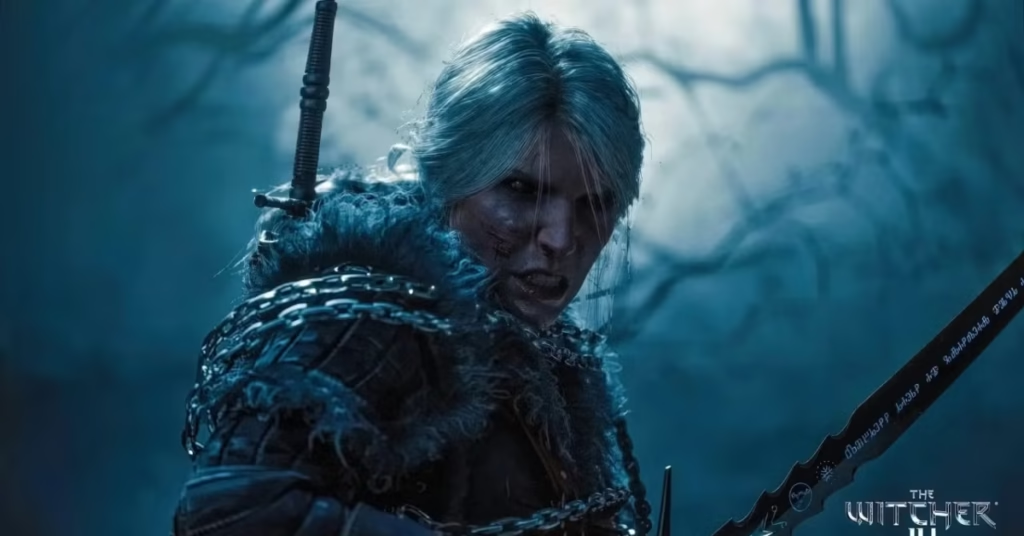The Witcher 4: Inside CDPR’s Ambitious New Saga, Release Date, Gameplay Revolution & Kovir’s Debut
Introduction: A New Era for The Witcher 4
CD Projekt Red’s The Witcher 4 (codenamed Polaris) isn’t just a sequel—it’s a technological and narrative leap into uncharted territory. With a confirmed post-2026 release window (likely 2027) , the game promises to redefine dark fantasy RPGs. Leveraging Unreal Engine 5 and starring Ciri as the protagonist, it introduces the frozen kingdom of Kovir, advanced gameplay systems, and a morally complex world. Here’s everything revealed at Unreal Fest 2025 and beyond.
1. The Witcher 4 Release Date: Targeting 2027
- Official Timeline: CFO Piotr Nielubowicz confirmed Witcher 4 won’t launch before 2027, as it misses CDPR’s incentive program cutoff (December 31, 2026) .
- Development Stage: Entered “full-scale production” in late 2024, with 400+ developers dedicated to the project .
- Why 2027?: The shift from REDengine to Unreal Engine 5, plus CDPR’s commitment to avoiding Cyberpunk 2077’s launch issues, necessitates extended development .
2. Unreal Engine 5 Tech Demo: A Glimpse of the Future
At Unreal Fest Orlando 2025, CDPR showcased a stunning tech demo running on a base PS5 at 60 FPS. Key revelations :

Revolutionary UE5 Features
- Nanite Foliage: Dense forests and snow-capped mountains in Kovir rendered without performance drops.
- Mass AI Crowds: Bustling towns like Valdrest use MetaHuman tech for dynamic NPCs.
- FastGeo Streaming: Near-instant environment loading, enabling seamless open-world traversal.
- Unreal Animation Framework: Realistic muscle deformation (via ML Deformer) and horseback physics for Ciri’s mount, Kelpie.
Performance Targets
- 60 FPS on Consoles: Demo confirmed smooth performance on PS5, dispelling concerns about UE5 scalability .
- Ray Tracing Support: Lighting and reflections enhance Kovir’s icy landscapes .
3. Ciri: The New Witcher & Her Redesigned Powers
Witcher 4 centers on Ciri’s early career as a monster slayer, but her abilities undergo major changes :
Narrative Role
- Complex Protagonist: CDPR emphasizes her duality—”honorable yet rebellious”—and emotional depth .
- Geralt’s Return: Voice actor Doug Cockle confirmed Geralt’s appearance, though not as the lead .
Gameplay Abilities
- Trial of the Grasses: Ciri undergoes full mutations, granting access to potent alchemy (e.g., combat potions) .
- Magic Overhaul: Teleportation scaled back; replaced by advanced spells like “Bolt” and chain-based combat .
- Balanced Progression: CDPR aims to avoid overpowered skills early on, focusing on growth through player choices .
4. Kovir: The Never-Before-Seen Open World
The snowy northern realm of Kovir, only mentioned in past games, is Witcher 4’s primary setting :
Lore Significance
- Political Hub: A mineral-rich kingdom north of Redania, ruled by King Tankred Thyssen (where Geralt/Triss retired in one Witcher 3 ending).
- New Locations: Demo highlights Valdrest (a bustling port town), rugged mountains, and sacrificial sites like Stromford .
H3: Environmental Design
- Brutal Dark Fantasy: CDPR promises a “crumbling old order” with dynamic weather, treacherous terrain, and morally ambiguous quests .
- Reactive World: NPCs respond to Ciri’s actions—e.g., villagers fear her presence after monster hunts .
5. Gameplay Innovations: Beyond The Witcher 3 vs The Witcher 4
Witcher 4 evolves CDPR’s RPG formula with UE5-powered systems:
Combat & Exploration
- Magic-Focused Combat: Ciri’s spells integrate seamlessly with swordplay, enabling aerial combos and crowd control .
- Mount Physics: Kelpie’s animations sync with terrain, enhancing horseback exploration .
Choice & Consequence
- Branching Stories: Decisions affect Ciri’s relationships and the world state (e.g., saving Mioni in Stromford leads to tragedy) .
- Human Monstrosity: Themes of “evil in people” force players into morally gray dilemmas .
6. The Witcher Universe Expansion
Polaris kicks off a new trilogy, with spin-offs in development:
- Project Sirius: Multiplayer-focused Witcher game by The Molasses Flood .
- Witcher 1 Remake: Rebuilt in UE5, releasing after Witcher 4 .
Conclusion: The Ambitious Road to 2027
Witcher 4 represents CDPR’s bid to reclaim the RPG throne. With its 2027 release target, Unreal Engine 5 showcase, and bold reinvention of Ciri and Kovir, the game aims to merge technological prowess with deep storytelling. As co-CEO Michał Nowakowski declared, this partnership with Epic Games will “push open-world technology forward” for the entire industry .
External Links:
Sources: CD Projekt Red, Epic Games, GamesRadar, PCGamesN, Redanian Intelligence.
